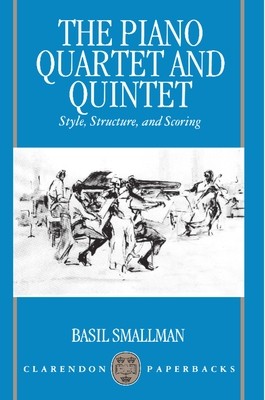
- We will send in 10–14 business days.
- Author: Basil Smallman
- Publisher: Clarendon Press
- ISBN-10: 0198166400
- ISBN-13: 9780198166405
- Format: 14 x 21.6 x 1.2 cm, softcover
- Language: English
- SAVE -10% with code: EXTRA
Reviews
Description
Designed as a companion volume to the author's earlier study, The Piano Trio, this book surveys the development of the piano quartet and quintet from their beginnings in the mid-eighteenth century to the present day. Developments during the first four decades of the nineteenth century resulted not only in Schubert's renowned Trout Quintet, but also in works of much brilliance by Dussek, Hummel, Weber, and others in which the piano predominates in a concerto-like role. Subsequently, Schumann's epoch-making quintet of 1842 initiated a broadly "symphonic" style, with large-scale structures and closely integrated textures, which was taken up by many later composers, including Brahms, Dvorak, Cesar Franck, Faure, and Elgar. The author also examines the numerous changes in the nature of the genres which have occurred in recent times, and gives special consideration to a number of works by leading twentieth-century composers, in which "mixed" media are formed by combining wind
instruments with the normal strings-and-piano ensembles.
EXTRA 10 % discount with code: EXTRA
The promotion ends in 18d.03:41:57
The discount code is valid when purchasing from 10 €. Discounts do not stack.
- Author: Basil Smallman
- Publisher: Clarendon Press
- ISBN-10: 0198166400
- ISBN-13: 9780198166405
- Format: 14 x 21.6 x 1.2 cm, softcover
- Language: English English
Designed as a companion volume to the author's earlier study, The Piano Trio, this book surveys the development of the piano quartet and quintet from their beginnings in the mid-eighteenth century to the present day. Developments during the first four decades of the nineteenth century resulted not only in Schubert's renowned Trout Quintet, but also in works of much brilliance by Dussek, Hummel, Weber, and others in which the piano predominates in a concerto-like role. Subsequently, Schumann's epoch-making quintet of 1842 initiated a broadly "symphonic" style, with large-scale structures and closely integrated textures, which was taken up by many later composers, including Brahms, Dvorak, Cesar Franck, Faure, and Elgar. The author also examines the numerous changes in the nature of the genres which have occurred in recent times, and gives special consideration to a number of works by leading twentieth-century composers, in which "mixed" media are formed by combining wind
instruments with the normal strings-and-piano ensembles.


Reviews